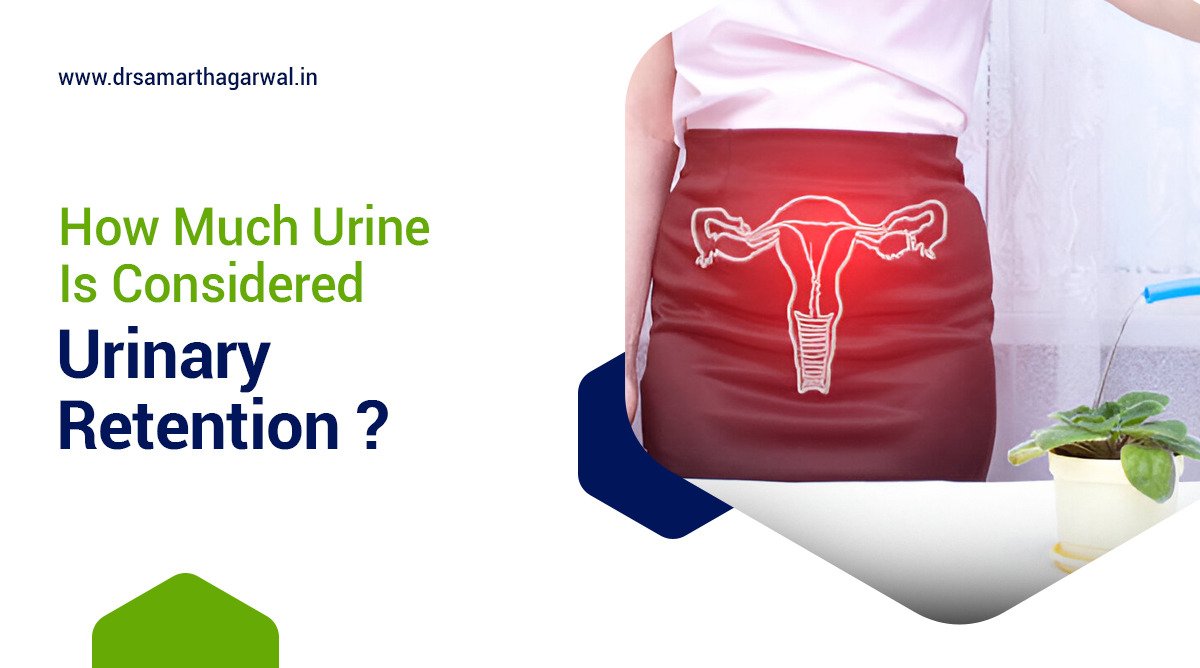Urinary retention is a medical condition characterized by the inability to completely empty the bladder. This condition can lead to various complications, including urinary tract infections and bladder damage. Understanding how much urine is considered urinary retention is crucial for effective diagnosis and treatment. The amount of urine retained can vary significantly among individuals, influenced by factors such as age, gender, and underlying health conditions. In this article, we will explore the normal and excessive amounts of urine retention, the maximum bladder capacity, causes, diagnosis, and treatment options available for urinary retention.
What is the normal amount of urine retention?
The normal amount of urine retention is typically minimal, with a post-void residual urine volume of less than 50 milliliters considered acceptable. In healthy individuals, the bladder should effectively empty during urination, leaving little to no residual urine. However, some degree of residual urine is common, particularly in older adults or those with certain medical conditions. A small amount of residual urine, generally under 100 milliliters, may not indicate a significant problem. Nevertheless, when the residual volume exceeds this threshold, it may suggest incomplete bladder emptying, warranting further investigation into potential causes of urinary retention.
In clinical practice, the measurement of post-void residual urine volume is often conducted using a bladder scan, which provides a non-invasive method to assess bladder function. This assessment is crucial for identifying patients with urinary retention, as it helps determine the extent of bladder emptying. A higher residual volume could indicate underlying issues such as bladder outlet obstruction or neurogenic bladder, both of which can lead to chronic urinary retention. Therefore, understanding what constitutes normal urine retention is essential for the effective management of urinary tract health and the prevention of complications.
How much is a lot of urine retention?
A significant amount of urine retention is defined as a post-void residual urine volume exceeding 100 milliliters. This level of retention may indicate serious underlying conditions, such as acute or chronic urinary retention.
- Acute Urinary Retention: Patients may be unable to urinate despite a full bladder, requiring immediate medical intervention.
- Chronic Urinary Retention: Develops gradually, often without obvious symptoms until significant residual volumes accumulate.
Symptoms of urinary retention can include difficulty initiating urination, a weak urine stream, and the sensation of incomplete bladder emptying, which can affect quality of life and lead to complications like urinary tract infections. Monitoring urine volume is crucial for timely diagnosis and management to prevent bladder distension and damage.
What is the maximum volume the bladder can hold?
The average maximum bladder capacity is approximately 400 to 600 milliliters, though it can vary based on age, gender, and health conditions. When the bladder reaches this capacity, the urge to urinate intensifies, and failure to void may lead to discomfort and complications, such as bladder overdistension, which can impair muscle function and cause urinary retention.
In clinical practice, understanding bladder volumes is essential for diagnosing and managing urinary retention. Bladder scans can assess current volume and post-void residual urine. Consistently high residual volumes may indicate issues like bladder outlet obstruction or benign prostatic hyperplasia. Monitoring bladder capacity is crucial for urinary tract health and preventing complications.
Causes of Urinary Retention
Urinary retention can result from a variety of causes, including anatomical, neurological, and functional factors. Identifying the specific cause is crucial for effective diagnosis and management, as treatment strategies may vary accordingly.
Causes of Urinary Retention:
- Anatomical Causes:
- Bladder Outlet Obstruction:
- Commonly due to benign prostatic hyperplasia (BPH) in men, where an enlarged prostate compresses the urethra, hindering urine flow.
- Strictures:
- Narrowing of the urethra caused by injury, infection, or inflammation, leading to obstruction.
- Tumors:
- Growths in the urinary tract that can block urine passage, resulting in increased residual urine volume.
- Pelvic Organ Prolapse:
- In women, conditions like cystocele or rectocele can displace the bladder and obstruct urine flow.
- Bladder Outlet Obstruction:
- Neurological Causes:
- Neurogenic Bladder:
- Conditions such as multiple sclerosis, spinal cord injuries, or stroke can damage nerves that control bladder function, leading to difficulty in bladder emptying.
- Diabetic Neuropathy:
- Diabetes can cause nerve damage that affects bladder control, resulting in urinary retention.
- Neurogenic Bladder:
- Functional Causes:
- Detrusor Muscle Dysfunction:
- Weakness or lack of coordination in the bladder muscle can prevent effective bladder contraction and emptying.
- Medications:
- Certain drugs, especially those with anticholinergic properties (e.g., antihistamines, antidepressants), can inhibit bladder muscle contractions and contribute to urinary retention.
- Detrusor Muscle Dysfunction:
- Other Contributing Factors:
- Infections:
- Urinary tract infections (UTIs) can cause inflammation and swelling, leading to temporary urinary retention.
- Post-surgical Complications:
- Surgeries involving the pelvic region may result in temporary or permanent urinary retention due to anatomical changes or nerve damage.
- Infections:
- Importance of Understanding Causes:
- Identifying the underlying cause of urinary retention is essential for tailoring treatment strategies.
- Effective management can prevent complications such as bladder damage, recurrent urinary tract infections, and decreased quality of life.
A comprehensive understanding of the various causes of urinary retention is vital for healthcare providers to develop appropriate diagnostic and treatment plans, ultimately improving patient outcomes.
Diagnosis of Urinary Retention
The diagnosis of urinary retention involves a detailed assessment of the patient’s medical history, symptoms, and physical examination. Key diagnostic tools, such as bladder scans and additional tests, help identify the underlying causes of the condition.
Diagnosis Process:
- Medical History and Symptoms:
- Review of the patient’s medical history
- Inquiry about lower urinary tract symptoms
- Assessment of previous urinary tract infections
- Evaluation of medications that may contribute to urinary retention
- Physical Examination:
- Comprehensive physical assessment to identify any relevant signs
- Bladder Scan:
- Measurement of post-void residual urine volume
- Key indicator of urinary retention; normal range is typically less than 50 mL
- Further Diagnostic Tests (if necessary):
- Urodynamic Studies:
- Assess bladder function and pressure
- Help determine the cause of urinary retention
- Imaging Studies:
- Evaluate for anatomical abnormalities in the urinary tract (e.g., ultrasound, CT scan)
- Urodynamic Studies:
- Importance of Early Diagnosis:
- Prevent complications such as bladder damage or recurrent urinary tract infections
- Facilitate the development of an effective treatment plan
- Improve the patient’s overall quality of life
A thorough and timely diagnosis is essential for managing urinary retention effectively and ensuring optimal patient outcomes.
Treatment of Urinary Retention
Treatment for urinary retention varies based on the underlying cause and severity. Immediate intervention is crucial for acute cases, while chronic retention may require a combination of lifestyle changes, medications, and surgical options.
Treatment Options:
- Acute Urinary Retention:
- Urinary catheterization to relieve bladder distension
- Immediate removal of residual urine
- Chronic Urinary Retention:
- Lifestyle modifications
- Medications for bladder outlet obstruction
- Surgical interventions for anatomical issues (e.g., prostate enlargement, strictures)
- Pelvic floor exercises
- Bladder training techniques
A comprehensive approach is essential for optimizing bladder function and improving overall well-being.

If you have any questions or concerns about urinary retention or your urinary health, please contact Dr. Samarth Agarwal, the top urologist in Siliguri. Your well-being is our priority, and Dr. Agarwal is here to provide expert guidance and care.




